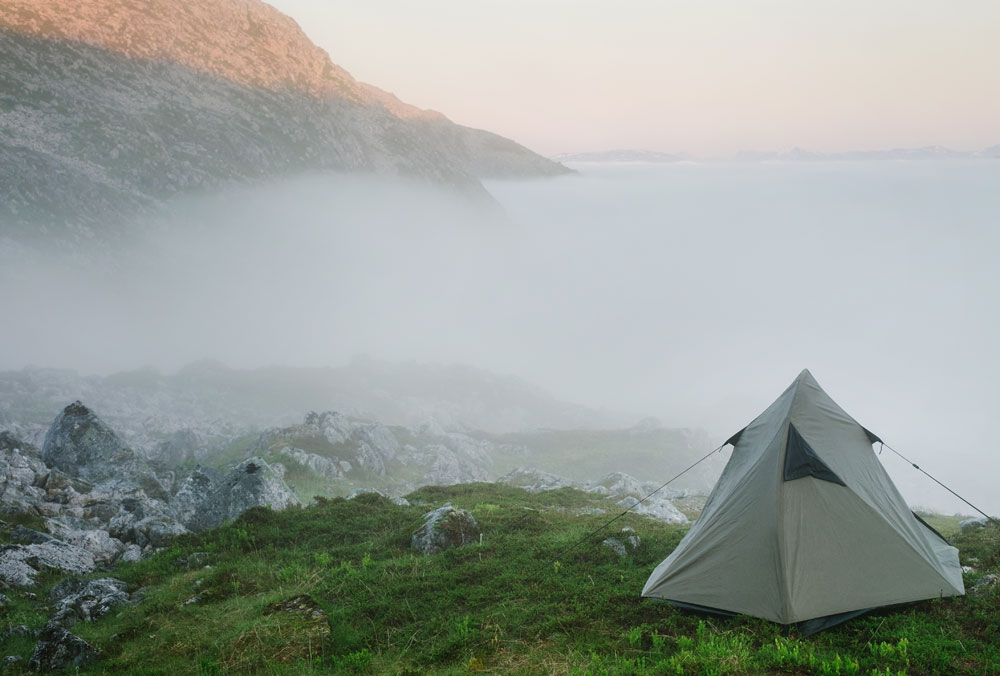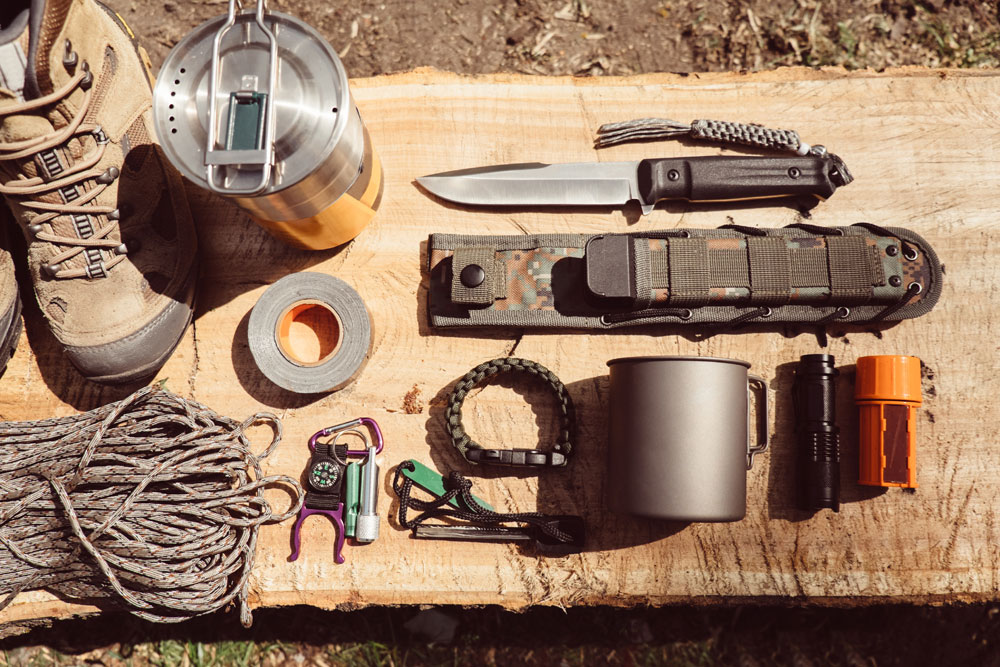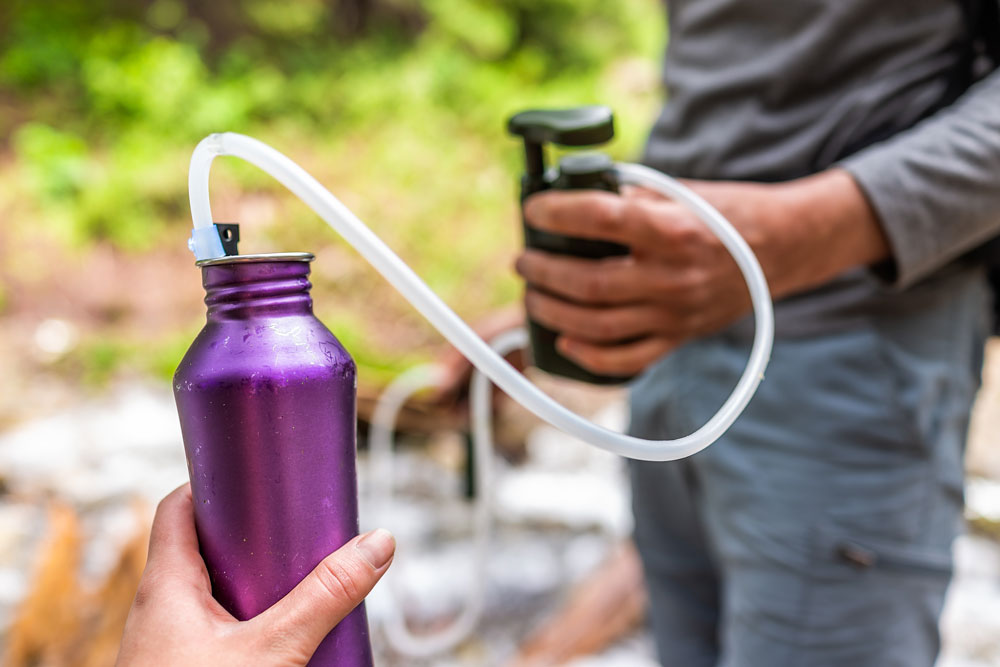Backcountry camping is a fantastic way to experience a new side of the outdoors. There is something remarkable about waking up in the middle of the woods with nobody around you and feeling independent and free, if only for a few nights.
The awe and joy you feel when out in the wilderness, whether by yourself or with a small group of friends, are directly correlated to how much responsibility you’re willing to take for your well-being. However, the joys and responsibilities of backcountry camping don’t need to be intimidating. On the contrary, backcountry camping offers an enlivening learning curve.

What Is Backcountry Camping?
Backcountry camping means that you’re not near a road or developed area. You have no facilities that are frequently associated with the trappings of society: no plumbing, no parking lots, no place to park your car. You’ve likely either hiked, skied, kayaked, canoed, climbed, mountain biked, or ridden a horse to your camping location. The number one rule of backcountry camping is always to plan: Let someone know where you’re going and be prepared for the worst.
Start Small
For your first backcountry camping adventure, plan to be away for only a night or two. That way, if you pack the wrong gear or forget to bring a change of socks, it won’t be as much of a disaster as heading out on a week-long expedition without the essentials. Try to find a place that you could hike out of easily if an emergency arose, and do your research ahead of time.
Build Your Fitness
While there isn’t a mandatory fitness test for backcountry camping or backcountry hiking, bear in mind that life in the backcountry can be physically demanding. Going on walks or runs, doing bodyweight exercises such as squats and lunges, lifting weights, core exercises, and indoor rock climbing can all be excellent activities to help prepare you for the wilderness.
The Time, Place, and Gear
The first step to understanding backcountry camping is to realize that your choice of gear is going to depend very much on where you go and for how long. When are you going, and what season is it? How long will you be out there?
These questions will dictate how you pack. Camping in the spring in the Arizona desert will be different from camping in the winter in Pennsylvania’s national forests. Dry-wicking base layers are crucial to keeping warm at night, but how many layers you stack on top of them will depend on how cold it gets.
This logic extends to the kind of sleeping bag and camping situation you choose. Hammock camping is magnificent, but, when it gets cold, you have to pack a lot to compensate for the breeze beneath your hammock.

Choosing the Right Sleeping Arrangements
What’s “right” is going to be what keeps you safe and warm. When you’re looking for a sleeping bag, try to choose one that’s rated for at least ten degrees Fahrenheit colder than what you would expect. An appropriate sleeping bag coupled with warm layers can keep you warm even on cold nights.
Next, consider what you will put between your sleeping bag and the ground. While Thermarest roll mats are comfortable and lightweight, they don’t provide the same barrier that a small, inflatable sleeping mat can. There are plenty of lightweight sleeping mats on the market that auto-inflate or that can be inflated by mouth. These give you an air barrier between your back and the ground, leaving you much warmer and more comfortable.
Finally, you are probably wondering whether to sleep in a tent, in a hammock, or in a bivvy bag. This all comes down to personal preference and practicality. Hammock camping is a wonderful way to camp in warm, dry weather. If the weather is warm but bodes rain, bring a lightweight tarp to string up over your hammock. On the flip side, a bivvy bag functions as a waterproof cover for your sleeping bag and gives you a minimalistic, bare-bones camping experience.
If you choose to go the conventional route and stick to tent camping, remember to pack a ground fly to protect against water coming in through the bottom of the tent. In addition, remember that the lighter and drier the tent, the better. For your first experience, choose an affordable tent. You can invest more in your tent once you are more familiar with backcountry camping and your specific needs.
Food, Water, and Safety

When it comes to food and safety in the wilderness, remember to prepare for the worst. Bring emergency rations just in case your trip turns into more than you were expecting. Pack a wilderness first aid kit, complete with an Israeli bandage and triangular bandages.
If you’re just going on an overnight backpacking trip, the chances are that you might be able to carry all the water you need. However, if you don’t feel this is possible or if you will be gone for longer, invest in a water filter or water pump.
A Few Last Skills to Master
Before you go, master the basic, everyday skills. Know how to build a fire, put out a fire, cook the food you’ve packed, and dig a latrine. Familiarize yourself with the Leave No Trace ethic and break in your boots with a few practice hikes on local trails. Make packing lists to be sure you don’t forget anything.
A Final Checklist
Before you go, make sure you have the following items for safety, in addition to your first aid kit, clothing, food, shelter, and water supply:
● Duct tape or repair kit
● Trowel
● Any environmentally friendly toiletries you need
● Lighter or matches
● Pocket knife
● Headlamp
Conclusion
Backcountry camping is one of life’s finest pleasures. It allows you to step away from the crowds, stress, and hustle and to enjoy the pleasures of the outdoors. Taking ownership of the details of your well-being, from trowel to tent, doesn’t have to be intimidating. Rather, it can be an enlivening experience and a chance to become more in tune with the outdoors.






























